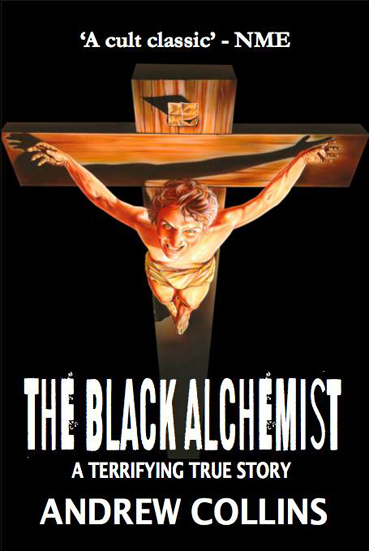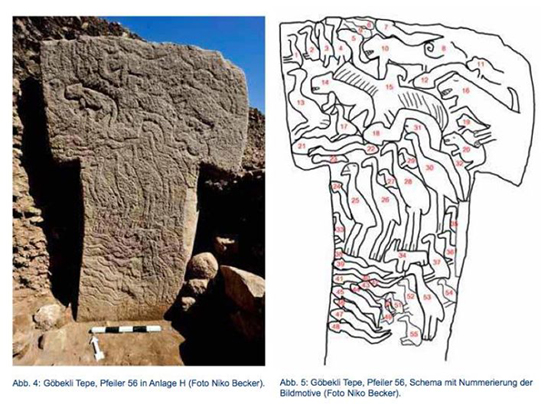In
this newsletter: The
Black Alchemist published finally. Kindle and paperback editions available now.
Download your free PDF sampler of The Black Alchemist. Special limited
edition of 276 copies on the way. Update on everything new at Göbekli Tepe.
Excarnation and the cult of the vulture in the Neolithic world. The opening of
Sanliurfa's new museum. Come with us to Göbekli Tepe in May or September,
or Peru and Bolivia in June/July. The publication of Caroline Wise's new book
Finding Elen: The Quest for Elen of the Ways, with the story behind my
own contribution. Laird Scranton's new book Point of Origin, and a new Youtube
video by Greg Little on the Path of Souls material, including an account of America's
ancient giants, and their relationship to the mound-building cultures of North
America
Hi,
hope this newsletter finds you well. After much time and considerable effort the
re-mastered edition of my book The Black Alchemist is finally available. It is
378 pages, with 66 black and white illustrations, and has been made available
using Amazon’s incredible new process known as CreateSpace. The book is published
by myself under the imprint name of ABC Books of Leigh-on-Sea, Essex, UK.
Get it in Kindle e-book format at the following links:
Amazon.com:
http://www.amazon.com/dp/B00U4ZFOXY
Cost for the Kindle edition in the USA is $7.70 including purchase tax.
Or get it from Amazon.co.uk:
http://www.amazon.co.uk/Black-Alchemist-Andrew-Collins-ebook/dp/B00U4ZFOXY/ref=sr_1_1?ie=UTF8&qid=1425299645&sr=8-1&keywords=the+black+alchemist+kindle
Cost for the Kindle edition in the UK is £4.99 including VAT.
Or you can buy The Black Alchemist now as a 378-page paperback with silky matt cover, faded style pages and a stiff perfect blinding from Amazon.com at $18.99 using the following link:
http://www.amazon.com/Black-Alchemist-Terrifying-True-Story/dp/0955838606/ref=sr_1_6?ie=UTF8&qid=1425249029&sr=8-6&keywords=the+black+alchemist
Or get the paperback from Amazon.co.uk for just £9.99 at the following link:
http://www.amazon.co.uk/Black-Alchemist-Terrifying-True-Story/dp/0955838606/ref=sr_1_4?ie=UTF8&qid=1425248895&sr=8-4&keywords=the+black+alchemist
The book’s storyline is as follows:
The Black Alchemist is a real account of terrifying true events. The nightmare begins when Collins and his friend Bernard G. visit a secluded churchyard on the Sussex Downs of southern England as part of a psychic quest. They are looking for an ancient Egyptian treasure, a golden staff known as the Stave of Nizar, brought to England at the time of the Crusades. Yet instead of finding a long lost Egyptian relic they uncover a stone spearhead, inscribed with magical symbols. Through further investigation they discover it has been concealed as part of a dark occult ritual by a character they dub the Black Alchemist. Collins and Bernard are then thrust into a series of horrifying confrontations as this sinister figure attempts to put a stop to their unwanted interference.
Then, in the aftermath of Britain’s first hurricane in nearly 300 years, the Black Alchemist initiates the next phase of his great work—the creation of an antichrist, a second Adam, taking the form of an unholy child of unspeakable power. Even though Bernard now wants out of this dangerous affair, Collins convinces him it is something they cannot ignore, setting up a final psychic confrontation on the Sussex Downs.
During the course of his investigations the author uncovers the true extent of the Black Alchemist’s obsession with Graeco-Egyptian magic and alchemy, as well as his use of the angelic invocations of Elizabethan magus Dr John Dee. Plus he learns the final fate of the historical object known as the Stave of Nizar.
“Already
a cult classic” The NME
For those who possess or have read the 1988
original of The Black Alchemist, I can assure you that this new, remastered edition
is much expanded with various new chapters, and a completely new ending, along
with a reprise in the current day showing that the Black Alchemist affair is by
no means over. Indeed, my friend and colleague Richard Ward and I have been back
to the Sussex Downs, the Black Alchemist’s old stomping ground, just in the
past few months doing new questing work there, trying to uncover what BA was really
up to down there.
I have decided to make available to you a free PDF sampler
of The Black Alchemist, including the first seven chapters, which will give you
a good idea of how the story begins, and what it’s all about. This is available
now at the following link:
https://www.dropbox.com/s/y9zembnlnihgh96/The%20Black%20Alchemist%20Sampler.pdf?dl=0
The sampler includes the book’s Preface, which is an introduction to
the whole Black Alchemist saga, along with the impact made by the original book.
For instance, did you know that due to the popularity of the book its main protagonist,
the Black Alchemist, went on to become a super villain in a special edition Green
Arrow issue published in 1991? Or that the Black Alchemist appeared as the big
bad in a Lara Croft Tomb Raider game? Did you know also that when I went on tour
promoting the book in 1989 Christians picketed virtually every event, and on one
occasion even threatened to fire bomb the venue if the all-dayer was allowed to
go ahead? In addition to this, a death threat from an overzealous Christian directed
at me was sent to the wrong Andrew Collins in my road? He was not amused!
In addition to the Kindle and standard edition paperback version of The
Black Alchemist, I am creating a special limited edition of 276 signed and
numbered copies. Each one will bear on its pre-frontispiece a unique Monas
hieroglyphica stamp in blood-red ink, with the edition number and author signature
also in blood-red ink.
The Monas hieroglyphica was a magical sigil
or device created by the Elizabethan magus Dr John Dee. It was thought to embody
all the powers of God, and could act as a means of accessing the centre of the
universe. The symbol was hijacked, used and continually updated by the Black Alchemist.
It appeared on many of the fixing markers he would leave at sites to seal his
rituals.
A run of 276 copies for the special edition was chosen as this
is traditional number of days between the Immaculate Conception of the Virgin
Mary and the birth of Jesus Christ, something the Black Alchemist inverted for
his own purposes to create an unholy child, an antichrist, carried in the womb
of a barren crone, linked with the power of the goddess Hekate.
This special
edition will be priced the same as the standard edition, but will, of course,
be limited to the print run. More news on this soon. In the meantime, I recommend
buying the Kindle e-book or the Amazon paperback, the prices for which have been
deliberately kept as low as possible.
Just
want to say thanks to everyone who helped me republish The Black Alchemist, especially
Storm Constantine, my good friend from Immanion Press, without whom the book would
not have happened.
On to other things now …
The Mysteries
of Göbekli Tepe
Last week I received an email from a Göbekli
Tepe enthusiast in the United States asking whether I knew what the symbol was
at the base of Enclosure H’s Pillar 57, which shows on its ‘neck’
area “antithetic” (i.e., a pair of opposing or mirror-like) snakes facing
each other, between which is a filled circle that bears a striking resemblance
to the apple the Serpent tempted Adam and Eve with in the Garden of Eden.
I am embarrassed to say that not only could I not answer the correspondent’s
question, but I didn’t even know of an Enclosure H at Göbekli Tepe,
having been out of the loop attending other ventures in my life, like determining
the importance of hominid hybridization to the origins of civilization, and attempting
to republish old books such as The Black Alchemist and The Seventh Sword.
After requesting further information on Göbekli’s Enclosure H (and
Enclosure G, which also seems to have passed me by), I pointed out that, even
though I had not yet seen a picture of Pillar 57, the likelihood is that the antithetic
serpents flanking the filled circle probably did not represent the Serpent (or
should that be Serpents) of Eden. What is more, neither the book of Genesis, or
any other Hebrew midrashic text, records that the forbidden fruit the Serpent
used to tempt Adam and Eve was an apple, or indeed any citreous fruit. In fact,
as I relate in Göbekli Tepe: Genesis of the Gods,there is tantalizing evidence
from some ancient texts to suggest the forbidden “fruit” was a head
or kernel of wheat. If this is correct, it tells us quite clearly that the story
of the Fall of Man is a parable relating to humanity’s sudden shift from
a hunter-gatherer lifestyle to one of settled farmer with the introduction of
plant domestication at the beginning of the Neolithic revolution, which most likely
began within sight of Göbekli Tepe sometime just after 9000 BC.
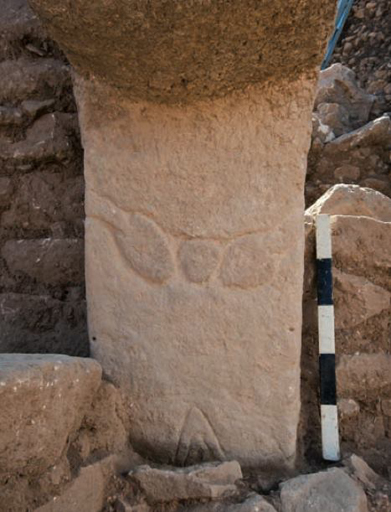 Göbekli's Pillar 57 in Enclsoure H (Pic credit: Niko Becker/DAI) | So if not a rosy red apple, then what was the filled circle on Pillar 57? The easiest answer, and one I confirmed after I did finally see a picture of the stone in question, is that it represents an abstract human head in its role as the human soul. A similar filled circle is seen on the wing tip of a vulture on Enclosure D’s Pillar 43. Here it is even more likely to represent the newly departed soul of the individual, who appears as a headless matchstick man further down the stone. A similar filled circle shown being taken under the protective wing of two vultures, again in the proximity of headless matchstick man, is to be seen in a painted scene showing what appears to be the process of excarnation found at the Neolithic city of Çatal Höyük in southern-central Anatolia. In this example, which probably dates to ca. 7000-6000 BC, three small circles drawn within the main circle are meant to signify the eyes and mouth of the individual. Further confirmation of the filled circle on Pillar 57 being a human soul represented by a human head comes from the fact that the circle clearly narrows towards its base, suggesting the outline of a skull. |
The
front face of Enclosure H's Pillar 57. Note the antithetic snakes either side
of the filled circle, which almost certainly represents an abstract human head
in its role as the human soul.The front face of Enclosure H's Pillar 57. Note
the antithetic snakes either side of the filled circle, which almost certainly
represents an abstract human head in its role as the human soul.
Having
pointed this out to my correspondent, he cited references to these new discoveries
at Göbekli Tepe, which I was able to download with comparative ease. The
first is entitled The Göbekli Tepe Newsletter 2014, and is produced by DAINST,
the branch of the German Archaeological Institute responsible for the ongoing
excavations and scientific projects taking place at Göbekli Tepe. It is available
at the following link:
http://www.dainst.org/documents/10180/123677/Newsletter+Göbekli+Tepe+Ausgabe+1-2014/64f0df96-ecfb-45d8-807a-4424a60a5ac0;jsessionid=186860B45741750AC81607CE4B003FA3?version=1.1&imagePreview=0
A second, more scholarly, article is to be found in the latest issue of Neo-lithics
(14/1), the newsletter covering all aspects of research and excavation at Neolithic
sites in the Near East, principally those in Anatolia, Syria and Iraq. Entitled
“Göbekli Tepe: Preliminary Report on the 2012 and 2013 Excavation Seasons”
its authors are Oliver Dietrich, Çigdem Köksal-Schmidt, Jens Notroff,
Cihat Kürkçüoglu, and the late Klaus Schmidt. It is retrievable
from Academia.edu at the following link:
https://www.academia.edu/6280717/Göbekli_Tepe._Preliminary_Report_on_the_2012_and_2013_Excavation_Seasons
After reading these informative pieces, along with another I found written
by Schmidt in German, I became much better acquainted with Göbekli’s
Enclosure H (although I could still find no mention of Enclosure G). Enclosure
H is located at the western limits of Göbekli Tepe’s occupational mound,
and dates to the tenth millennium BC according to tentative radiocarbon dating
of burnt materials removed from newly discovered fire pits, the first found at
the site. One of its central pillars (P51) remains in situ. Indeed, there is a
picture of it in Göbekli Tepe: Genesis of the Gods, which I took in September
2012 before the rest of the enclosure had been exposed. On the stone’s inner
face is a leaping feline, most likely a panther, which faces south. It takes the
place of similarly positioned leaping foxes carved on the inner faces of central
pillars uncovered in the main area of enclosures located in the southeastern part
of the site.
In the Göbekli Tepe book I speculate that this carved
feline be the supernatural panther (nemra) personified in Sumerian and later Babylonian
astronomy as the constellation MUL.UD.KA.DUH.A, the “constellation (MUL)
of the (feline) storm demon with the open mouth.” This has been identified
with the stars of Cygnus and neighbouring Cepheus, its open mouth most likely
the twin streams of the Milky Way’s Great Rift. This supernatural panther,
ruled by Nergal, king of the dead, was seen in Babylonian myth as guarding the
entrance to the realm of the dead (see Gavin White, Babylonian Star-lore,2007,
37-8, 159-61).
The second central pillar in Enclosure H was robbed out
in antiquity, leaving behind a gaping hole in the floor, which was presumably
of terrazzo, a hard mortar made from burnt lime and clay. A single remaining fragment
of what could be this missing central pillar lies nearby. Aside from Pillar 57,
with its antithetic serpents supporting a filled circle in the position of the
T-shape’s neck, at least two other pillars have been identified in the southern
section of the monument’s ring-wall.
| Beyond
the enclosure’s southern edge excavators have found evidence of another wall
running parallel with the existing one. Between the two they have also uncovered
a stone staircase of at least five steps, although how this relates to the enclosure
remains unclear. What the second wall does indicate, however, is the presence
of a much larger and more complicated structure than was originally thought. As stated above, Enclosure H is located at the western edge of Göbekli Tepe. Its position when seen from above is marked by two 9 x 9 metre-square trenches in the southwestern corner of a series of eight trenches in a 4 x 2 arrangement. To the northeast of this excavation area is another set of trenches in a 4 x 3 grid, and I suspect this is where Enclosure G has been identified. When I was there in 2014 I was able to photograph a T-shaped pillar in this same area, which perhaps forms part of this structure. | 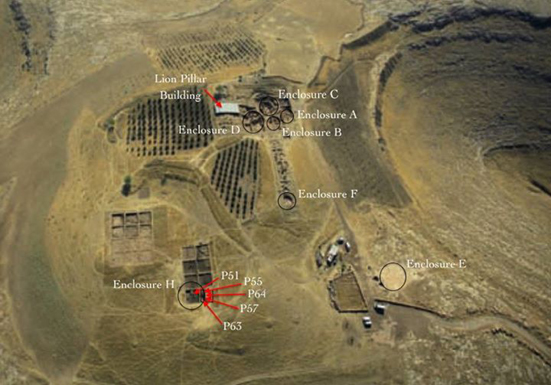 Satellite image of Göbekli Tepe showing the location of Enclosure H. |
Overhead
view of Göbekli Tepe showing the position of Enclosure H and the positions
of the new stones found.Overhead view of Göbekli Tepe showing the position
of Enclosure H and the positions of the new stones found.
One stone talked
about by Schmidt in his article in German is Enclosure H's Pillar 56, the left-hand
face of which is literally covered with interlocking reliefs of birds and animals
of the natural world, with as many as 40 creatures represented either singular
or in multiples. They include foxes, felines, wader birds, a flightless bird,
lots of snakes, as well as boars, a hare and, taking central stage right across
the upper section of the stone, a huge raptor or scavenger bird, its wings outstretched.
It has an angular head and a pronounced hooked nose, so could be either an eagle
or a vulture.
| A similar bird with outstretched wings, this time definitely a vulture, can be seen on Pillar 43 in Göbekli’s Enclosure D. This I have linked in Göbekli Tepe: Genesis of the Gods with both the Neolithic cult of the dead, and also the constellation of Cygnus, which on the Euphrates and also, seemingly, in Armenia, was identified as a vulture. Vultures are the primary bird species involved with the process of excarnation, even to this day. If you want to see why just type in key words such as “excarnation” “vultures,” “Tibetan,” “Himalayas” and “sky-burial” in a search engine and hit “images”! It is a gruesome sight you will behold, but one that is necessary if we are to truly understand what vultures meant to our ancestors. Indeed, even Klaus Schmidt suspected that Göbekli Tepe had been the setting for excarnation practices. |
Vultures
were, almost certainly, seen in the Neolithic world of the Near East as reflections
of the soul’s journey into the afterlife. In other words, the bird acted
in the role as psychopomp, a Greek word meaning either “soul carrier”
or “soul accompanier.” In much later times the vulture’s function
as soul bird was replaced by less ugly birds such as the eagle, hawk, and, among
the Sabaean and Mandaean descendents of the Göbekli builders, the dove or
pigeon.
The use of vulture imagery in connection with symbols for the
human soul and human body makes it clear that excarnation featured in the ritual
beliefs and cosmological views of the Pre-Pottery Neolithic world at places like
Göbekli Tepe.
And talking of vultures, among the movable objects
found during the new excavations at Göbekli Tepe was the upper section of
a totem pole showing a vulture perched on a human head – a symbol, as already
noted, not simply of the skull, but also of the seat of the soul. A similar section
of a stone totem pole showing a vulture standing on human heads was found during
the 1980s at another Pre-Pottery Neolithic site named Nevali Çori in the
extreme north of Sanliurfa province.
In both examples, the head of the
vulture was found to have been deliberately smashed, an act suggesting either
the totem pole was ritually decommissioned in this manner at the end of its useful
life, or this was an act of iconoclasm against a pre-existing cult that had now
gone out of favour. Although the former explanation seems likely, the second option
cannot be ruled out. With the appearance of agriculture in southeast Anatolia
sometime around 9000 BC there might well have been a switch of interests away
from an older stellar-based cosmology to one more associated with the appearance
of the sun, the eternal giver of life.
Certainly, later buildings at Göbekli
Tepe, such as Enclosure F and the Lion Pillar Building are, as I have outlined
elsewhere, aligned towards prominent solar events of the calendar year, sunrise
at midsummer in the first instance and the equinoctial sunrise in the second.
Much earlier structures were aligned more-or-less north-south towards either the
rising and/or setting positions of stars. As the earliest enclosures also feature
carved symbols of slim crescents most likely representing the old and new moon,
it implies an interest also in the effects of the moon, including the relationship
between the lunar cycle and both menstruation and fertility.
Other movable
objects found recently at Göbekli Tepe include a fragment of a stone bowl
on which are carved the heads and bodies of two upright snakes, below which is
a mesh like design, suggesting intertwined serpentine bodies. Something similar
is seen on Enclosure A’s Pillar 1, one of the first standing stones to be
uncovered at the site. Excavators have also found a small stone figurine depicting
an ithyphallic male on the back of which is a quadruped, most likely a feline
of some sort.
Nevali Çori on Display in Sanliurfa
Also
in the Göbekli Tepe Newsletter 2014 is news of the opening of the new archaeological
museum at nearby Sanliurfa. It is to include a permanent exhibition on Göbekli
Tepe and its culture, focusing on exhibits from the Neolithic and Chalcolithic
ages in Anatolia. I was pleased to see the museum will also feature the reconstructed
10,000-year-old cult building from Nevali Çori. This was a settlement site
like Göbekli Tepe, but much smaller with just one building dedicated to cultic
practices. It was more-or-less square in design and orientated almost precisely
northeast-southwest. It originally had twelve pillars set into its walls with
two much larger pillars erected parallel to each other within the centre of its
terrazzo floor, the oldest example anywhere in the world before the discovery
of Göbekli Tepe.
The Nevali Çori settlement site was lost
beneath the rising waters of the Euphrates river following the opening of the
Ataturk dam in 1990. Luckily, its cult building was dismantled and will now be
seen by all who visit Sanliurfa’s museum. This I look forward to seeing when
we return to Sanliurfa and Göbekli Tepe in May as part of Megalithomania’s
mini tour of sites in and around the area (the museum is scheduled to open in
April).
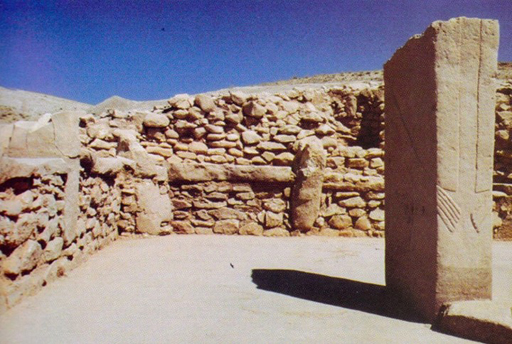
Nevali
Çori's cult building, now reconstructed
in the new Sanliurfa museum.
The
Göbekli Tepe Newsletter 2014 also makes it clear that Göbekli Tepe is
being prepared as an open-air museum in its own right, complete with a new visitor’s
centre, showing the Turkish government’s commitment to promote the site as
a major tourist attraction.
| If
you would like to see the world’s oldest megalithic temple complex, and also
visit Sanliurfa museum, why not join Hugh Newman and myself out there in May,
or when we return to the area in September. We will also visit Harran, the 10,000-year-old
Sabian city of the moon, and also Göbekli Tepe’s sister site Karahan
Tepe, where I shall be continuing my own explorations. For more information on these tours and how to register, click below: http://www.andrewcollins.com/page/articles/Origins_Tour_2014.htm | 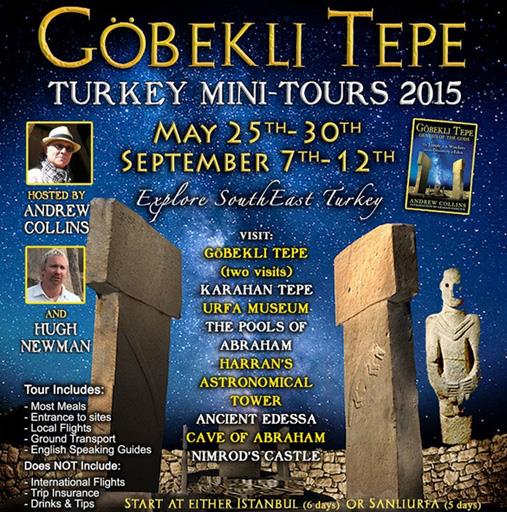 |
There
is still time also to come along with Hugh Newman, Brien Foerster and me on our
tour of Peru and Bolivia in June-July. We shall be exploring the mystery of the
elongated skulls of Paracas and trying to understand their true origins. Are these
heads simply artificially deformed, or are they natural – the last surviving
clues to a previous unknown human population?
For more information on
these tours and how to register, click below:
http://www.megalithomania.co.uk/peru2015.html
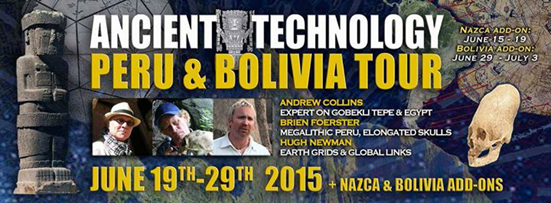
Finding
Elen: The Quest for Elen of the Ways
My good friend and colleague
Caroline Wise is close to the release of her new book Finding Elen: The Quest
for Elen of the Ways. As the title suggests, it is about a goddess named Elen
who until now has been much neglected in the Western mysteries tradition. She
appears as a symbol of female sovereignty in an ancient British story entitled
“The Dream of Macsen Wledig”, which can be found in a collection of
Welsh medieval texts bound and published under the name Mabinogion. Elen’s
name is preserved even today in the Sarn Elen roads that crisscross Wales. Their
existence speak of a former age when this mythical figure was seen as guardian
of the shining paths, hence her title Elen of the Ways.
Various experts
on the mysteries of Elen contribute essays to this new book. Caroline asked me
to contribute something on the roots of Elen as far back as 2012. To be honest,
I wasn’t sure what to write, as I felt I knew very little about the subject.
Yet Caroline was insistent it would be me who would uncover Elen’s true relationship
to the deer, the reindeer in particular, a connection she had intuitively felt
existed ever since she had experienced a vivid dream regarding the goddess as
guardian of the deer paths back in the 1980s.
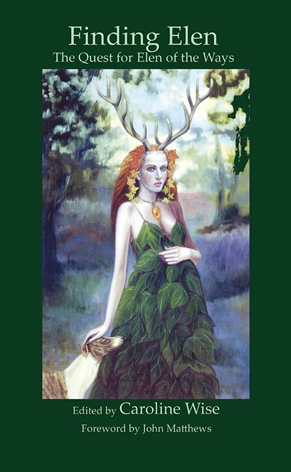 | Anyway,
three years later and I can report that whilst conducting research for my contributions
to Greg Little’s book Path of Souls, I did indeed find the true connection
between Elen and the deer, with the key being her role as the Mother of Life among
the peoples of the Russian Steppes. It would seem that an advanced population
known as the Kurgan culture re-introduced Elen into Europe at the beginning of
the Bronze Age, ca. 3000-2500 BC. However, her true roots were to be sought much
further east in the Ural Mountains of eastern Russia and the snowy realms of Siberia.
Here is where the cult of Elena, or more correctly Elena, in her guise as the
supernatural deer, or swan, would appear to have signified the Mother of Life
as far back as the Upper Palaeolithic age. Here too we can find the origin of
the name Elena, as I reveal in my own contribution to Caroline’s book, which
has an introduction by esteemed Western mystery tradition historian John Matthews. My own article is called “Elen and the Celestial Deer Path: The Quest to Find the True Origins of the Primordial Mother of Life.” It shows Elen’s role as a personification of the Milky Way and explains her relationship to Cygnus and other key stars, such as Castor and Pollux in Gemini, the celestial twins. |
I
can’t recommend this book enough, and urge you to seek out a copy. As soon
as I know the exact means of purchase, I shall relay this information to you.
My
colleague Greg Little, author of Path of Souls, has uploaded a YouTube
video on the subject of Path of Souls, featuring the story of the American giants
and their connection to the mound-building cultures such as the Adena and Hopewell
peoples.
This can be viewed at the following link:
https://www.youtube.com/watch?v=4c5pty3VKnM
Don't forget to download The Black Alchemist sampler now. You won't be disappointed.
